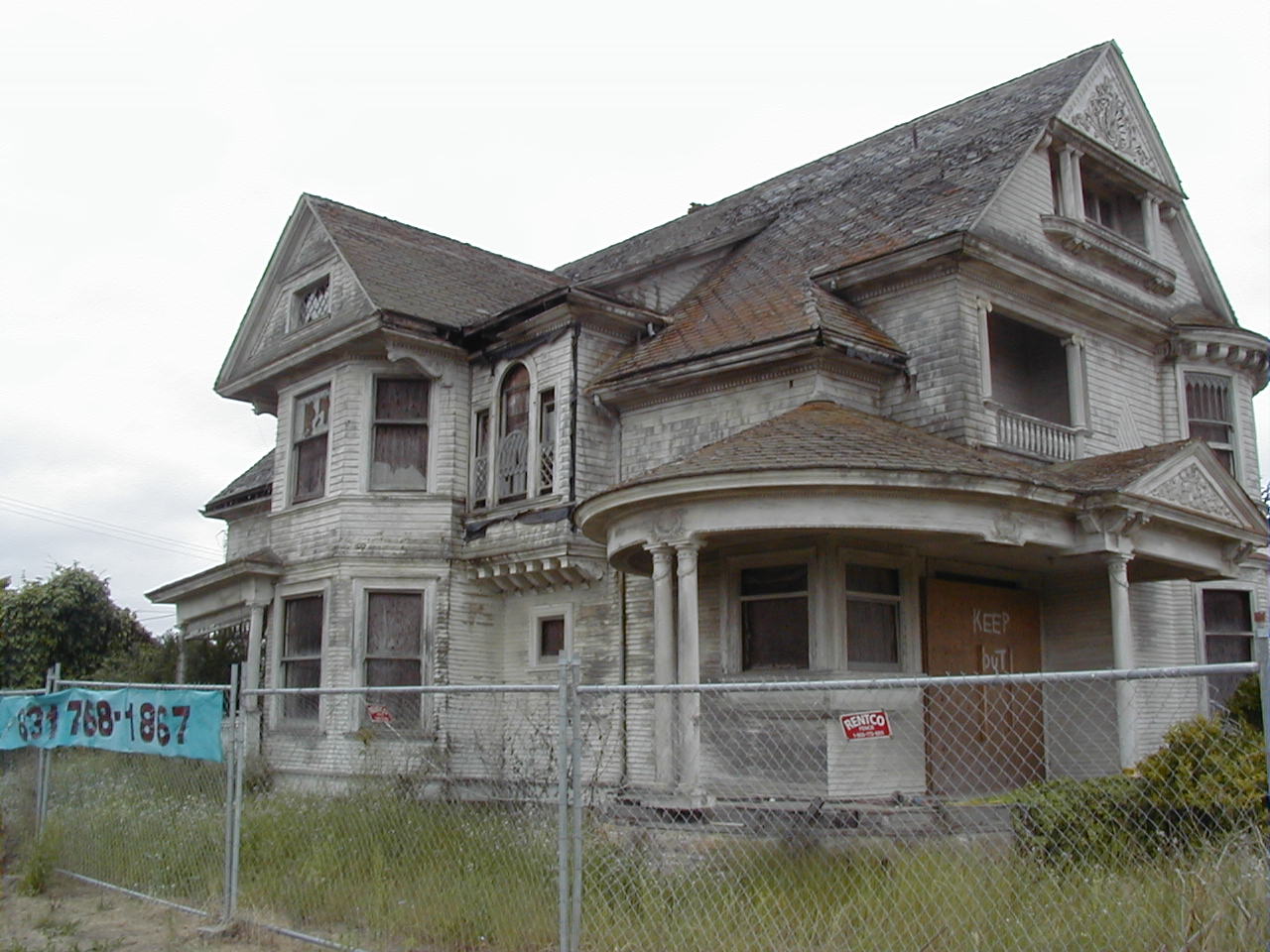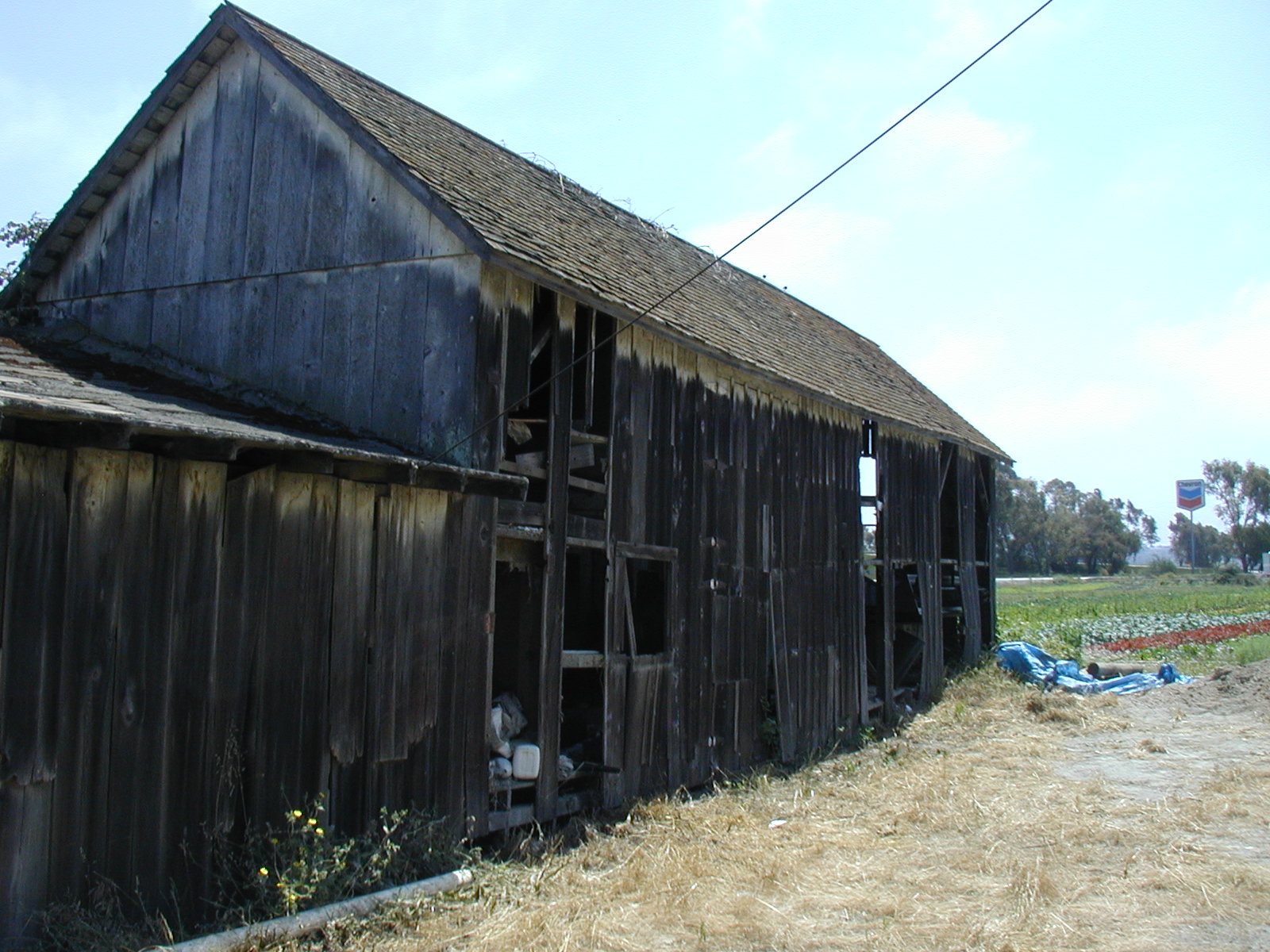Redman Hirahara Farmstead on:
[Wikipedia]
[Google]
[Amazon]
 Redman Hirahara Farmstead is a complex including a historic house designed by William Weeks (1897) and a vernacular barn in the
Redman Hirahara Farmstead is a complex including a historic house designed by William Weeks (1897) and a vernacular barn in the

 The barn was estimated to have been built around 1900, about the same time as the Victorian. The barn was 1 and ½ story with an attached lean to element. One small living unit was built prewar. In this room between the layer of a 1937 newspaper and two upper layers of wallpaper, portions of the Japanese book ''The'' ''Autobiography of Osugi Sakae'' was nailed to the wall.Redman-Hirahara, P44-000582, CA-SCR-357H: Carriage Barn Metadata Report by Char Simpson-Smith and Rob Edwards, Summer 2005. on file California State Northwest Information Center, Rhonert Park, Ca. Osugi Sakae (1885-1923) was a rebel, anarchist and martyr.
The carriage barn was expanded postwar to house other returning Japanese families. Various wall treatments and linoleum support the existence of four apartments.
The barn was estimated to have been built around 1900, about the same time as the Victorian. The barn was 1 and ½ story with an attached lean to element. One small living unit was built prewar. In this room between the layer of a 1937 newspaper and two upper layers of wallpaper, portions of the Japanese book ''The'' ''Autobiography of Osugi Sakae'' was nailed to the wall.Redman-Hirahara, P44-000582, CA-SCR-357H: Carriage Barn Metadata Report by Char Simpson-Smith and Rob Edwards, Summer 2005. on file California State Northwest Information Center, Rhonert Park, Ca. Osugi Sakae (1885-1923) was a rebel, anarchist and martyr.
The carriage barn was expanded postwar to house other returning Japanese families. Various wall treatments and linoleum support the existence of four apartments.

 Redman Hirahara Farmstead is a complex including a historic house designed by William Weeks (1897) and a vernacular barn in the
Redman Hirahara Farmstead is a complex including a historic house designed by William Weeks (1897) and a vernacular barn in the Pajaro Valley
The Pajaro River (''pájaro'' is ''bird'' in Spanish) is a U.S. river in the Central Coast region of California, forming part of the border between San Benito and Santa Clara Counties, the entire border between San Benito and Santa Cruz Coun ...
, south of Watsonville, California
Watsonville is a city in Santa Cruz County, California, located in the Monterey Bay Area of the Central Coast (California), Central Coast of California. The population was 52,590 according to the 2020 United States Census, 2020 census. Predomi ...
. A Japanese American owned farm which was maintained by local citizens and watched over by family friend, attorney John McCarthy, during the internment of Japanese Americans
Internment is the imprisonment of people, commonly in large groups, without charges or intent to file charges. The term is especially used for the confinement "of enemy citizens in wartime or of terrorism suspects". Thus, while it can simply ...
in World War II
World War II or the Second World War, often abbreviated as WWII or WW2, was a world war that lasted from 1939 to 1945. It involved the vast majority of the world's countries—including all of the great powers—forming two opposin ...
and was returned to the Hirahara family after the war, it is on the National Register of Historic Places
The National Register of Historic Places (NRHP) is the United States federal government's official list of districts, sites, buildings, structures and objects deemed worthy of preservation for their historical significance or "great artistic v ...
.The barn included a living unit prior to the war and was expanded postwar to house other returning Japanese families.Edwards, R.L. and Simpsom-Smith, C.A. "A Hane Family Remembrance: Living in the Carriage Barn". Pajaro Valley Historical Society Archive in Watsonville, Ca. 2010.
History
This Victorian house was designed by architect William Weeks, in 1897 for James Redman, who died in 1921. In 1937, it was sold for $69,575 to J. Katsumi Tao, a naturalized citizen and "brother-in-law" (or sibling-in-law) of Mitoshi Hirahara. Mitoshi was considered an 'alien' and could not purchase property at that time. Mr. Tao sold the property to Mitoshi's son, Fumio Hirahara (age 16) in 1940 for $10.00 as Fumio was also a naturalized citizen. Pajaro Valley Japanese Americans were removed in 1942 underExecutive Order 9066
Executive Order 9066 was a United States presidential executive order signed and issued during World War II by United States president Franklin D. Roosevelt on February 19, 1942. This order authorized the secretary of war to prescribe certain ...
. The Hirahara's had traveled to Fresno, CA to visit a relative, thinking they would be safe there, but soon all immigrants and Americans of Japanese descent were instructed to gather in the 'Fresno Assembly Center" and from there the Hirahara's were sent to the Jerome War Relocation Center in Arkansas by train. When the Jerome center closed, they were relocated to the Rohwer War Relocation Center
The Rohwer War Relocation Center was a World War II Japanese American concentration camp located in rural southeastern Arkansas, in Desha County. It was in operation from September 18, 1942, until November 30, 1945, and held as many as 8,475 Ja ...
in Arkansas
Arkansas ( ) is a landlocked state in the South Central United States. It is bordered by Missouri to the north, Tennessee and Mississippi to the east, Louisiana to the south, and Texas and Oklahoma to the west. Its name is from the Osage ...
. During this time away from their home in Watsonville, CA, as noted above, the Hirahara's were fortunate John McCarthy watched over their property in Watsonville to ensure the property rights were retained. Mr. McCarthy even went to visit the Hirahara's in Arkansas.
Before the entire Hirahara Family returned to Watsonville, CA, Mitoshi Hirahara and his eldest son Fumio Hirahara traveled to Watsonville first to ensure it was "safe" for the rest of the family to return. Upon receiving confirmation from Mitoshi and Fumio, the rest of the Hirahara family returned from Arkansas on June 4, 1945, by train and reoccupied the property. However, for many Japanese-Americans, injustices continued after the war and many were unable to return to their prewar housing. Additions to the carriage barn on the Hirahara property were made in order to provide housing for other Japanese-Americans who did not have homes to which they could return. Following the World War II, Mitoshi Hirahara employed many Japanese-Americans to support the farm until they could get back on their feet.
House
The house was constructed in 1897 and designed by William H. Weeks, who was responsible for the design of hundreds of unique buildings throughout California. It was a classic Queen Anne — it featured a rounded corner tower with a turret, gables with meticulously carved panels, Palladian windows and dentil molding. The intricate detailing that Weeks designed for the exterior of the home could also be found inside — expensive and decorative wood, including eastern oak and bird's eye maple, were used for doors, mantels, and window casings. Author and Hirahara descendant, Naomi Hirahara, describes a visit in the 1950s, “One favorite spot for all the grandchildren, grand-nephews, and grand-nieces was just on the side of the curved staircase on the first floor”.
Salvage Archaeology
Rescue archaeology, sometimes called commercial archaeology, preventive archaeology, salvage archaeology, contract archaeology, developer-funded archaeology or compliance archaeology, is state-sanctioned, archaeological survey and excavation carr ...
around the House was carried out in Summer of 2005 and reported on by Charr Simpson-Smith and Rob Edwards. The soil stratigraphy showed cultural strata interspersed with silt lenses of episodic flooding. The foundation for the front porch had been repaired, possibly after the 1906 earthquake. The distribution of artifact categories indicated the greatest activity occurred at the back door (32), front door (7), side door (3) and side of house with no door (2).
An extraordinary artifact was found near the back door, an "Imari
is a city located in Saga Prefecture on the island of Kyushu, Japan. Imari is most notable because of Imari porcelain, which is the European collectors' name for Japanese porcelain wares made in the town of Arita, Saga Prefecture. The porcelain w ...
industry" decorated bowl dated to the 1800s. It would classify as a “heritage” item as the Hirahara family first occupied the Farmstead in the 1930s.Redman-Hirahara Farmstead, pp-44000582, CA-SCR-357H: Redman-Hirahara House Excavation Report, Summer 2005, Charr Simpson-Smith and Rob Edwards, on file California State Northwest Information Center Rhonert Park, Ca. Page 49-50
Carriage barn
 The barn was estimated to have been built around 1900, about the same time as the Victorian. The barn was 1 and ½ story with an attached lean to element. One small living unit was built prewar. In this room between the layer of a 1937 newspaper and two upper layers of wallpaper, portions of the Japanese book ''The'' ''Autobiography of Osugi Sakae'' was nailed to the wall.Redman-Hirahara, P44-000582, CA-SCR-357H: Carriage Barn Metadata Report by Char Simpson-Smith and Rob Edwards, Summer 2005. on file California State Northwest Information Center, Rhonert Park, Ca. Osugi Sakae (1885-1923) was a rebel, anarchist and martyr.
The carriage barn was expanded postwar to house other returning Japanese families. Various wall treatments and linoleum support the existence of four apartments.
The barn was estimated to have been built around 1900, about the same time as the Victorian. The barn was 1 and ½ story with an attached lean to element. One small living unit was built prewar. In this room between the layer of a 1937 newspaper and two upper layers of wallpaper, portions of the Japanese book ''The'' ''Autobiography of Osugi Sakae'' was nailed to the wall.Redman-Hirahara, P44-000582, CA-SCR-357H: Carriage Barn Metadata Report by Char Simpson-Smith and Rob Edwards, Summer 2005. on file California State Northwest Information Center, Rhonert Park, Ca. Osugi Sakae (1885-1923) was a rebel, anarchist and martyr.
The carriage barn was expanded postwar to house other returning Japanese families. Various wall treatments and linoleum support the existence of four apartments.

In popular culture
In 2013, the writerNaomi Hirahara
Naomi Hirahara ( ja, 平原 直美, born 1962) is an American writer and journalist. She edited the largest Japanese-American daily newspaper, '' The Rafu Shimpo'' for several years. She is currently a writer of both fiction and non-fiction works ...
, describes the badly damaged house as the "Stem House" in the mystery novel ''Strawberry Yellow.''
References
{{reflist Buildings and structures in Santa Cruz County, California National Register of Historic Places in California National Register of Historic Places in Santa Cruz County, California Watsonville, California W. H. Weeks buildings